Louis Armstrong and his Stompers (1927).
Mientras Louis Armstrong se encontraba en Nueva York, su mujer, la pianista Lillian Hardin, fundó en Chicado los Dreamland Syncopators, y conociendo la situación de su marido, a finales de 1925 le convenció para que se uniera a ella. Entonces, Armstrong abandonó a Henderson, participó en la grabación de algunas canciones del compositor Perry Bradford y volvió a Chicago. Allí acompañó a la cantante y bailarina de blues y vodevil Berta Hill, y a la vocalista y compositora de jazz Blanche Calloway (hermana del famoso cantante y líder de banda Cab Calloway) en diferentes grabaciones antes de incorporarse al grupo de su mujer, que había conseguido un contrato en el Dreamland Cafe.
While Louis Armstrong was in New York, his wife, pianist Lillian Hardin, founded the Dreamland Syncopators in Chicago, and knowing her husband’s situation, in late 1925 convinced him to join her. Armstrong then abandoned Henderson, participated in the recording of some songs by composer Perry Bradford and returned to Chicago. There he backed up blues and vaudeville singer and dancer Berta Hill, and jazz vocalist and songwriter Blanche Calloway (sister of famous singer and bandleader Cab Calloway) on different recordings before incorporating into his wife’s group, who had made a deal with the Dreamland Cafe.
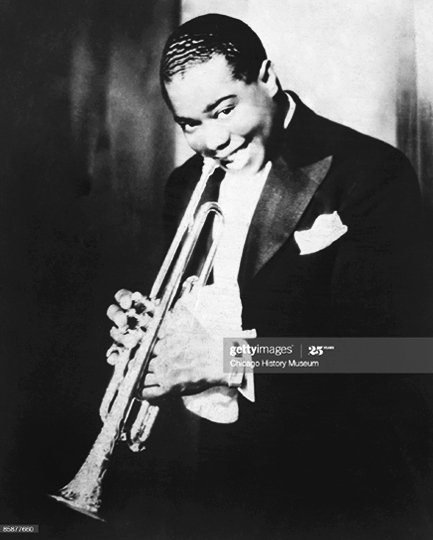
Debido al éxito que tuvieron, el violinista Erskine Tate se fijó en Armstrong y le ofreció un puesto en su Vendome Orchestra de veinte miembros, con la que tocaba en el Vendome Theatre, uno de los teatros más importantes de la ciudad, creando música para películas mudas y espectáculos en directo, incluidas versiones de jazz de música clásica. De este modo el trompetista trabajaba por las tardes en el teatro y por las noches en el Dreamland Cafe. Esta actividad tan intensa le permitió avanzar con rapidez como instrumentista y también comenzó a cantar sobre el escenario. Durante su estancia en la Vendome Orchestra pasaron por sus filas destacados músicos como el cornetista Freddie Keppard, el virtuoso trompetista Jabbo Smith, el clarinetista Buster Bailey, el pianista y líder de banda Earl Hines, y el vocalista, pianista, organista, violinista, compositor y animador cómico Fats Waller.
Due to their success, violinist Erskine Tate noticed Armstrong and offered him a position in his 20-piece Vendome Orchestra, with which he played at the Vendome Theater, one of the most important in the city, furnishing music for silent movies and live shows, including jazz versions of classical music. In this way the trumpeter worked in the evenings in the theater and in the Dreamland Cafe at night. This intense activity allowed him to progress quickly as an instrumentalist and also began to sing on stage. During his stay at the Vendome Orchestra, outstanding musicians such as cornetist Freddie Keppard, virtuoso trumpeter Jabbo Smith, clarinetist Buster Bailey, pianist and bandleader Earl Hines, and vocalist, pianist, organist, violinist, composer and comedic entertainer Fats Waller passed through its ranks.
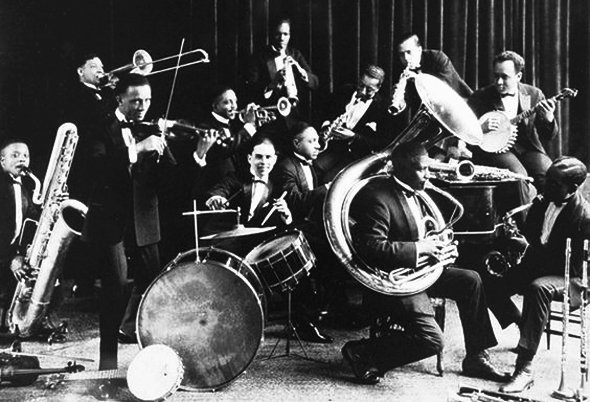
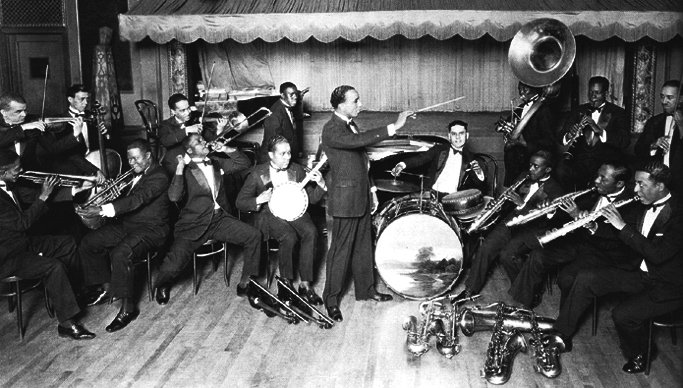
Unos meses más tarde terminó el contrato de los Dreamland Syncopators de su mujer con el Dreamland Cafe, pero Armstrong pronto encontró un trabajo mejor remunerado en la Sunset Syncopated Orchestra de Carroll Dickerson tocando en el The Sunset Cafe. Dickerson estableció su orquesta en 1920, pero debido a problemas con el alcohol fue despedido por los dueños del local y esta pasó a llamarse «Louis Armstrong and his Stompers» con Earl Hines como director musical.
A few months later, Armstrong’s wife’s Dreamland Syncopators’ contract with the Dreamland Cafe ended, but he soon found a better paid job at Carroll Dickerson’s Sunset Syncopated Orchestra playing at The Sunset Cafe. Dickerson set up his orchestra in 1920, but due to problems with alcohol he was fired by the owners of the venue and it was renamed “Louis Armstrong and his Stompers” with Earl Hines as musical director. This ensemble only recorded the side “Chicago Breakdown” (1927), which can be found below.
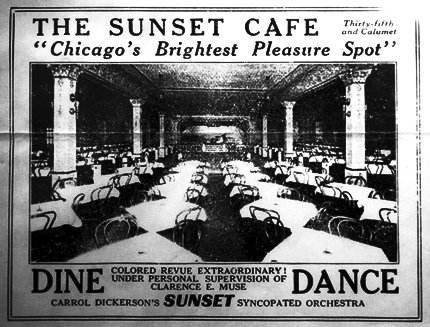
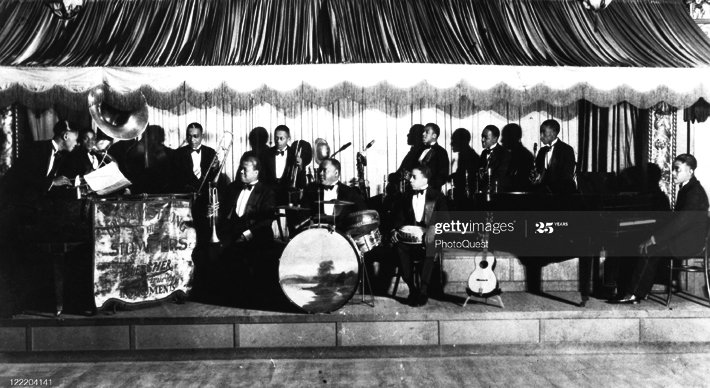
Armstrong está sentado el cuarto empezando por la izquierda
Translated with the help of DeepL

¡Enhorabuena!
✅ Has hecho un buen trabajo, por lo cual tu publicación ha sido valorada y ha recibido el apoyo de parte de CHESS BROTHERS ♔ 💪
♟ Te invitamos a usar nuestra etiqueta #chessbrothers y a que aprendas más sobre nosotros.
♟♟ También puedes contactarnos en nuestro servidor de Discord y promocionar allí tus publicaciones.
♟♟♟ Considera unirte a nuestro trail de curación para que trabajemos en equipo y recibas recompensas automáticamente.
♞♟ Echa un vistazo a nuestra cuenta @chessbrotherspro para que te informes sobre el proceso de curación llevado a diario por nuestro equipo.
🏅 Si quieres obtener ganancias con tu delegacion de HP y apoyar a nuestro proyecto, te invitamos a unirte al plan Master Investor. Aquí puedes aprender cómo hacerlo.
Cordialmente
El equipo de CHESS BROTHERS
Siempre he leído que Louis Armstrong era un trabajador incansable por el jazz, no sabía que su esposa era pianista!
Increíble el sonido de 1927
Me alegro de que te guste.